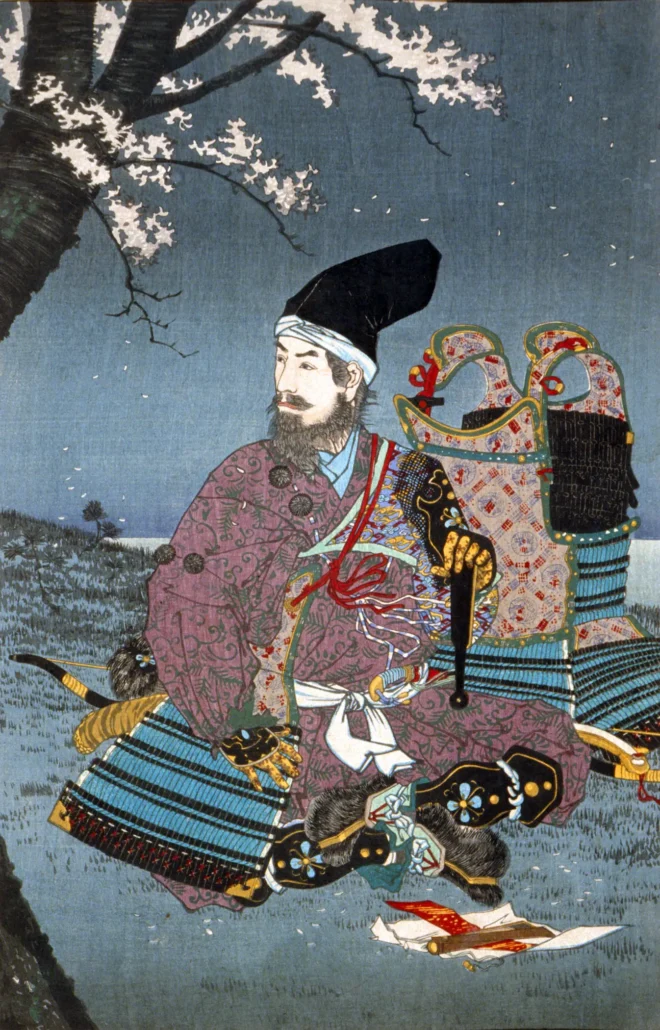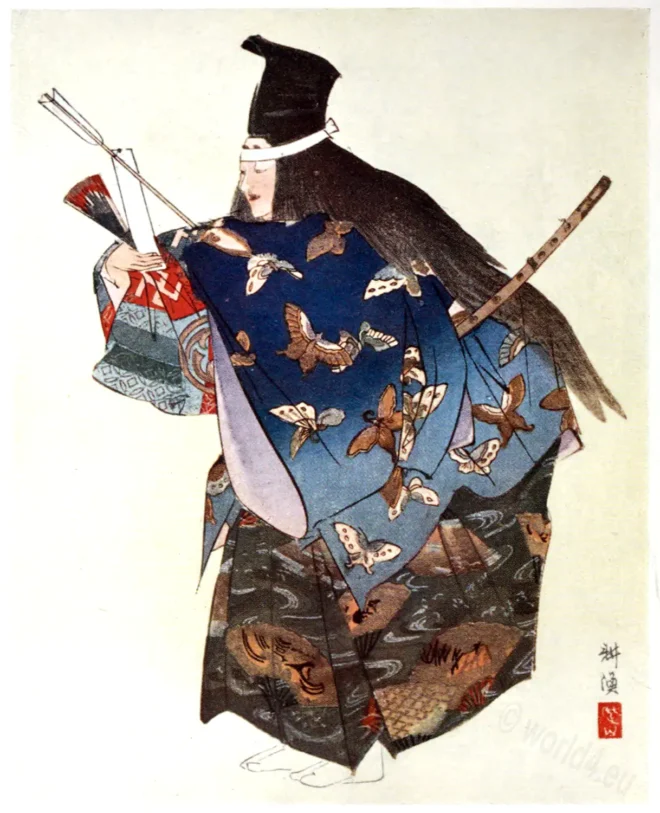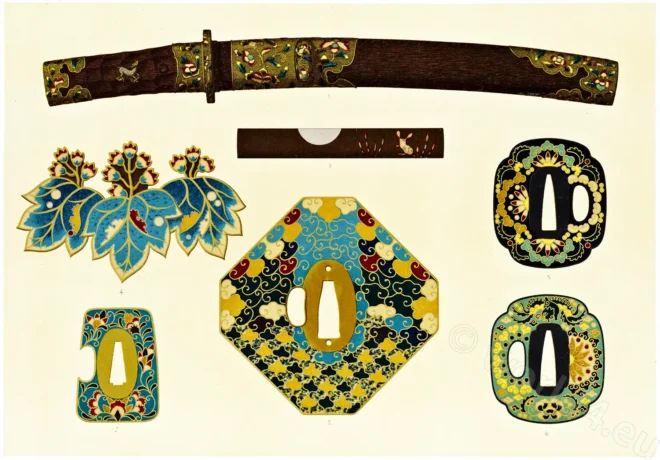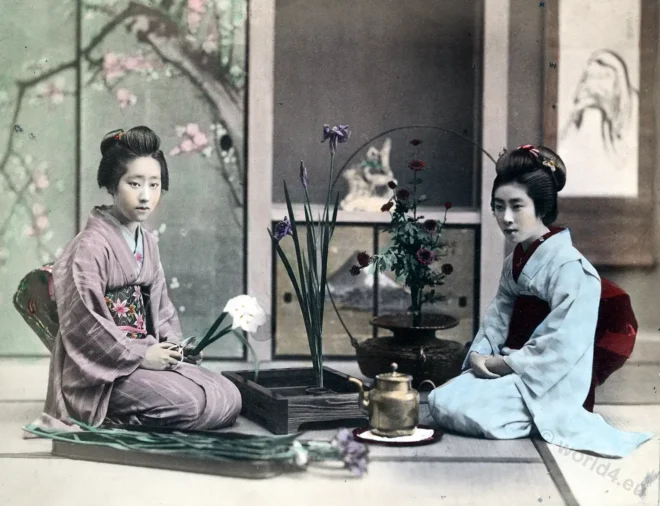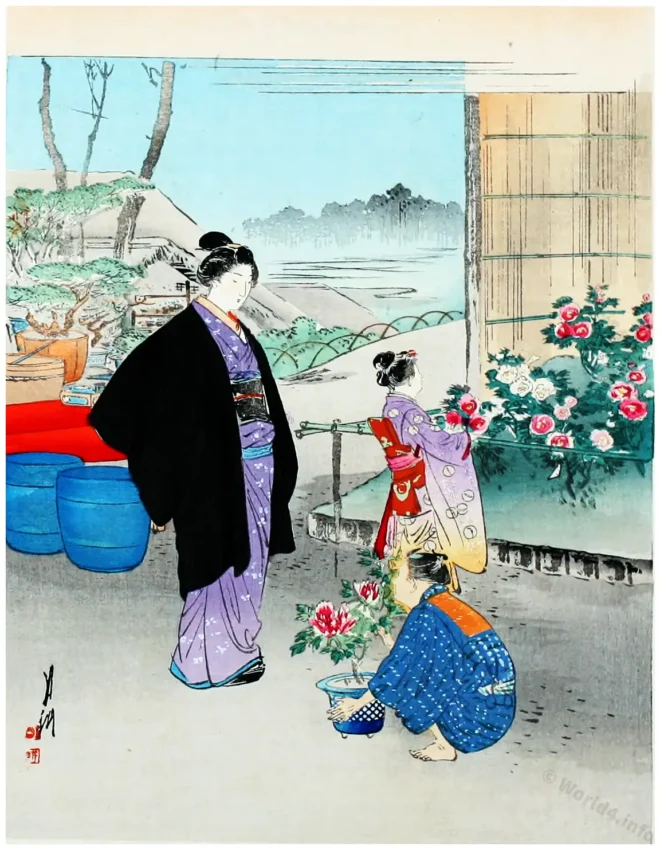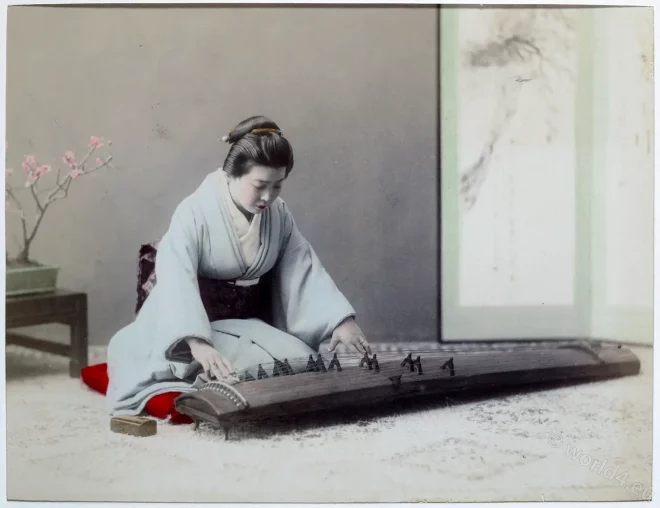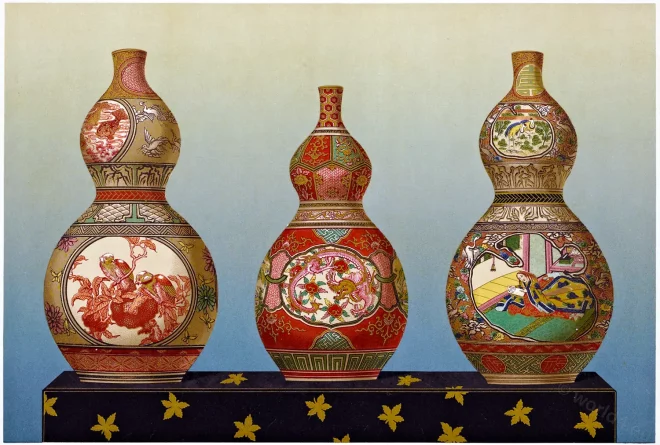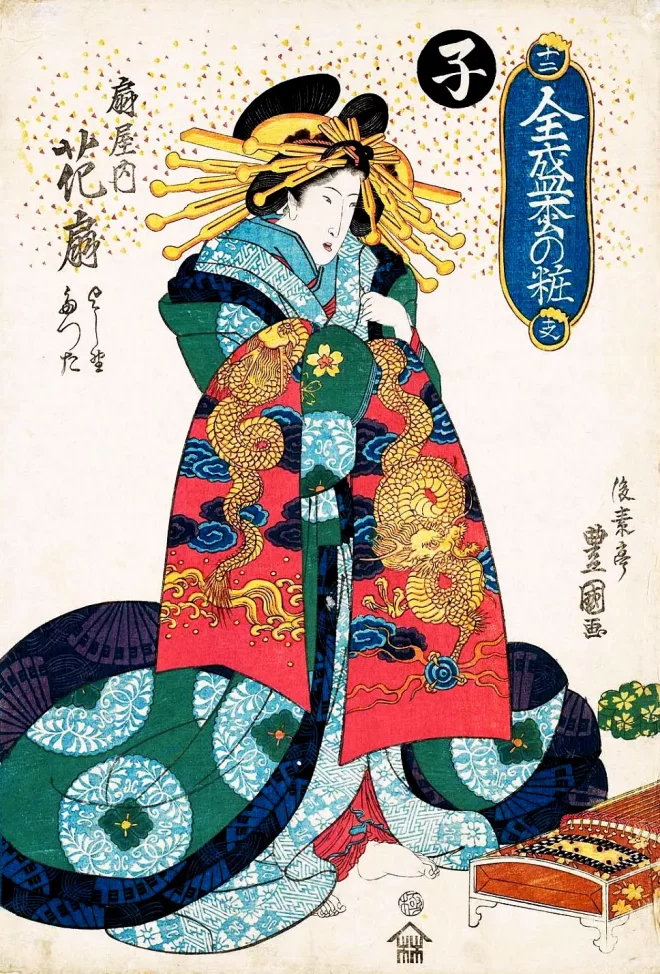Taira no Tadanori was a military commander of the Heike clan during the Heian period.
Tag: Japanese theme
Japanese culture of the 19th and early 20th century. Culture, arts and crafts, customs, mythology, religion and everyday life.
An actor of the Noh in full costume. Kagekiyo. Japan.
Kagekiyo. This plate illustrates well the voluminous nature of the medieval ceremonial garments.
Champlevé and Cloisonne enamel. Japan 16th-18th c.
Examples of Japanese Enamel of the sixteenth and seventeenth centuries are extremely rare, and are accordingly highly prized by collectors of Japanese art.
Temple gardens of Japan
Of all the gardens in Japan, the temple garden is a peaceful, secluded place, reminiscent of ancient Japan and times gone by.
The arrangement of flowers in Japan
Traditional rules established by the various “flower schools” have prevailed since the sixteenth century.
The Peony. Summer flowers of Japan.
It is essentially the favourite flower of the upper classes in Japan, yet play an important part in the art of the country.
A Koto player. Japanese musical instrument
The koto is the most important of Japanese musical instruments
The Osuwa Park at Nagasaki, Japan.
Gardens are supposed to symbolise abstract ideas, such as peace, chastity, old age, etc.
Old Kaga porcelain. Polychromatic bottles. Japan.
Double gourd-shaped Bottles, of fine polychromatic ware of old Kaga porcelain
Yoshiwara. Lives of famous courtesans, Japan.
The History of the Yoshiwara Yūkwaku. Geisha and Courtesan Life in Old Tokyo.

